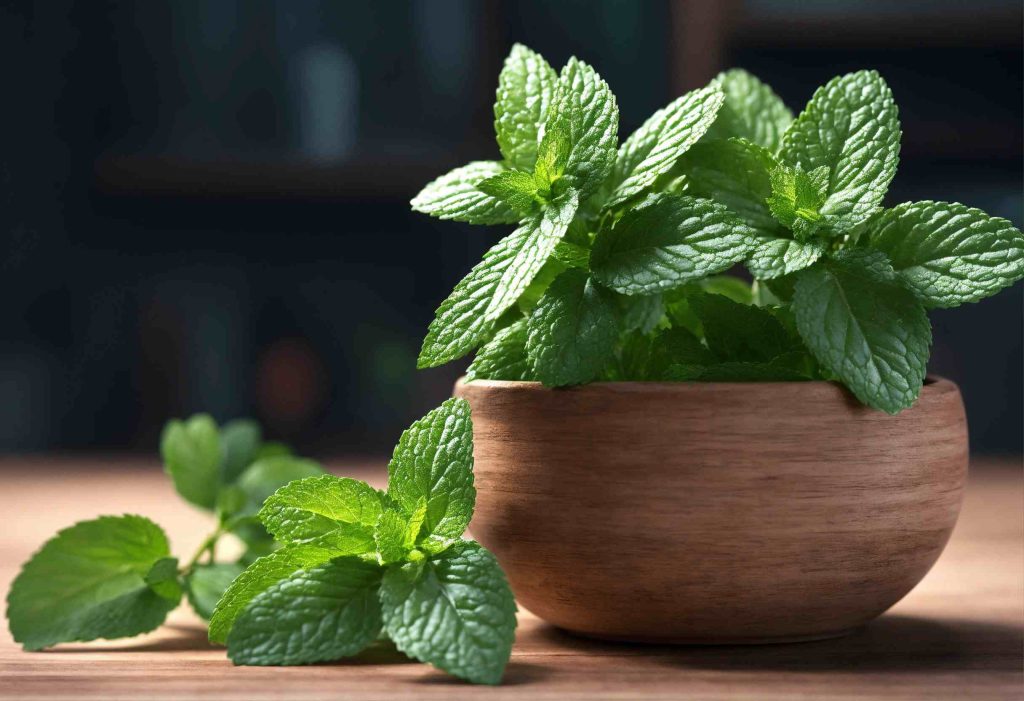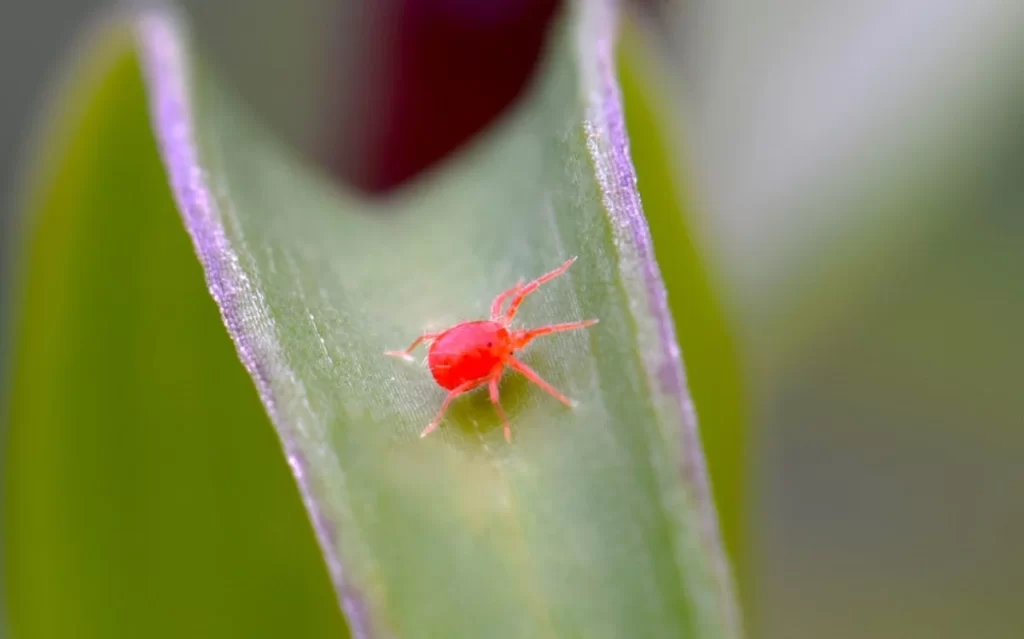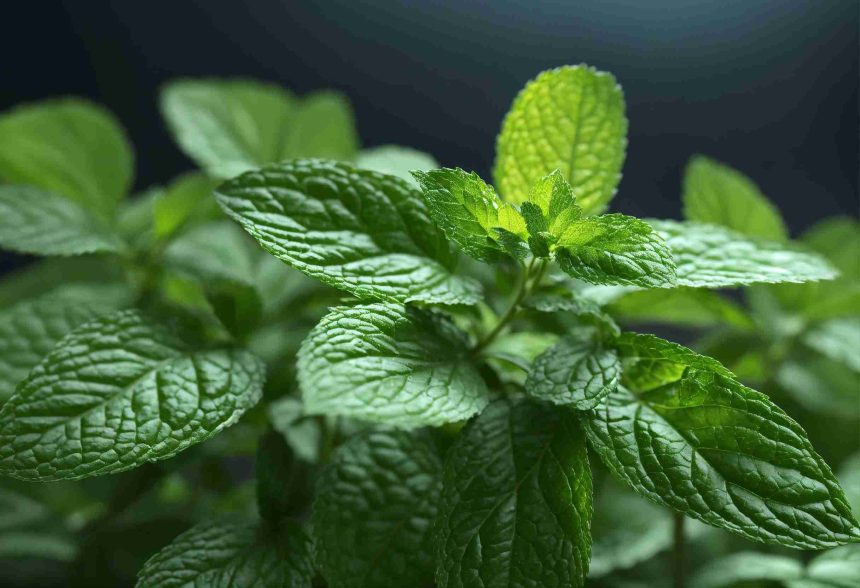Mint is one of the most popular herbs for home gardens. It’s fragrant foliage and flowers can spice up food, drinks, potpourri and more. Plus, mint spreads aggressively making it an excellent ground cover. However, you need the right companion plants to control it’s growth and repel pests. This allows your mint to thrive without taking over your whole garden.
Why Grow Mint?

Before getting into the best companion plants for mint, let’s look at some of the top reasons to grow this fragrant perennial herb in the first place:
Culinary Uses
The cool, energizing flavor of mint makes it a incredibly versatile cooking ingredient. Spearmint and peppermint varieties are most popular for culinary uses. Their leaves can flavor salads, sauces, jams, jellies, desserts and drinks ranging from mojitos to mint tea. Mint also enhances the flavors of fruits, vegetables, meat and more.
Natural Medicine
For centuries, mint has been used in natural and folk medicine traditions. Modern research shows spearmint and peppermint oil can help treat digestive issues by relaxing GI muscles and combatting bacteria overgrowth. The menthol in mint also has analgesic properties that can ease headaches. Mint tea is a gentle remedy often given to soothe coughs and colds.
Ornamental Plant
With it’s bushy foliage and pretty flowers, mint makes a nice ornamental plant for gardens, centerpieces and flower arrangements. The colorful varieties like pineapple mint and variegated ginger mint add visual interest as well. Let some plants flower to attract bees, butterflies and other beneficial pollinators to your garden.
Repel Pests
Many gardeners grow mint because it’s strong scent naturally repels certain insect pests like ants, aphids, squash bugs, flea beetles, mosquitos and more. Interplanting mint with your vegetables can help protect them from damage.
Ground Cover
Due to it’s vigorously spreading roots, mint spreads quickly and makes an nice ground cover plant. It fills in empty spaces and prevents weeds from taking hold.
Best Companion Plants for Peppermint

Peppermint is one of the most popular types of mint thanks to it’s cool, refreshing flavor. But keep in mind that peppermint is invasive and can take over your garden quickly. That’s why planting companion plants is so important for keeping it under control. Here are some of the best:
Marigolds
Marigolds make great companion plants for nearly any garden. Not only are they beautiful flowers, but they help repel pests like nematodes and other insects that can damage plant roots. Their strong scent confuses bugs looking for your other plants. For peppermint specifically, marigolds contain growth regulating chemicals that inhibit the mint’s aggressive spreading.
Some pretty marigold varieties to try are the Signet Marigold which has edible flowers and the tall American Marigold which acts as a living trellis for mint to climb up. Be sure to plant plenty of marigolds throughout your mint bed.
Garden Nasturtium
Another beautiful and useful flower, nasturtium repels aphids, squash bugs, whiteflies and other mint pests. It also produces a chemical similar to those in marigolds that slow down invasive mint growth. Plus, nasturtium has pretty yellow and red flowers that are edible along with it’s peppery leaves. It adds nice color contrast to mint’s green foliage.
Chives
Chives deter aphids and carrot flies which may attack mint plants. Their onion-like smell confuses these insects. And as a fellow herb, chives complement mint nicely in culinary uses. Plant chives around the outer edges of your containers to act as a protective barrier plant. The tall grass-like chives won’t hinder the lower-growing mint’s growth.
Lavender
Lavender’s light purple flowers look gorgeous alongside green mint leaves. In addition to it’s beauty, lavender repels fleas, flies and moths through it’s strong antiseptic essential oils. It’s also drought tolerant once established so makes a good companion for moisture-loving mint.
Cabbage Plants
Mint helps repel the cabbage moth which is destructive to brassica vegetables like cabbage, broccoli, kale and more. That’s why interplanting mint with these plants protects them. And vice versa, cabbage plants retard the growth of mint so it stays under control. The spreading mint roots also help suppress weeds around cabbage family plants.
Other Plants to Use:
Other plants that make good companions for peppermint include:
- Tomatoes
- Caraway
- Coriander
- Sweet alyssum
- Anise hyssop
- Bee balm
- Basil
Best Companion Plants for Spearmint

Spearmint is another popular culinary mint variety. It has a milder, sweeter taste than peppermint making it nice for tea, jellies, desserts and drinks. Spearmint also contains antioxidants and helps digestion.
Choose these companion plants to control spearmint’s growth while deterring pests:
Nitrogen-Fixing Plants
Because mint is a heavy feeder that depletes soil nutrients rapidly, interplant it with nitrogen-fixing plants. Their roots draw nitrogen from the air into the soil, replenishing it for the mint’s use.
Some examples are fava beans, peas and red clover which have pretty flowers as an added bonus. Just be sure to scatter these companion plants throughout the mint bed instead of planting solely around the border.
French Marigolds
Marigolds are great for peppermint too. But for spearmint try the smaller French marigold varieties. The Lemon Gem, Queen Sophia and Petite Harmony marigolds look beautiful alongside spearmint. And they all contain the growth-slowing compounds to help keep spearmint contained.
Roman Chamomile
Not only does Roman chamomile have soothing medicinal properties, but it makes a lovely mint garden ornamental. The tiny daisy-like white flowers on low carpeting plants complement spearmint’s bushy form nicely. Plus, chamomile accumulates potassium and calcium in the soil which benefits mint growth. It’s strong scent deters cucumber beetles, flying insects and diseases as an added bonus.
Other Plants:
Some other great companion plants for spearmint include:
- Strawberries
- Lady’s mantle
- Bee balm
- Geraniums
- Lavender
- Cosmos
- Marjoram
- Thyme
- Oregano
- Anise hyssop
Mix and match these along with marigolds and nitrogen-fixing plants for a thriving spearmint garden.
Companion Planting Tips for Optimal Mint Growth

When interplanting mint with companion plants, follow these tips:
Give Mint Plenty of Room
Plant it in a wide container or bed, spacing plants 12-18 inches apart. Mint’s roots spread horizontally so avoid cramped spaces or narrow planting beds.
Use Physical Barriers
While companion plants slow mint’s creep, above-ground physical barriers help too. Sink containers 2-3 inches below soil level to force roots to curve down instead of out. Or sink cut-off soda bottles, tiles or metal sheets 12-16 inches deep around bed edges.
Cut Back Regularly
Prune mint often in spring through fall, cutting stems right above the soil surface. This encourages bushier, compact growth vs tall and leggy Mint that tries to spread out quickly. Frequent harvesting for culinary uses counts as pruning too.
Pick the Right Site
When planting mint in garden beds, choose sites where you don’t mind it spreading via underground rhizomes to become a perennial backdrop. Or, grow mint in standalone containers on patios or other hardscape areas instead of directly in cherished garden beds.
Remove Flowers
Letting mint flower diverts energy from leaf production and flavor. Plus it gives the plant signals to propagate further through seed distribution. So nip flowers in the bud to keep mint focused on foliage for harvest.
Companion Plants for Other Mint Varieties
While spearmint and peppermint are most popular, fancy flavored mint varieties are fun too! Expand your collection by adding pineapple mint, chocolate mint, ginger mint, orange mint, grapefruit mint and more.
Choose companions based on mint growth rates. Fast spreaders pair well with marigolds, garden nasturtiums or onions for control. Slow growers like wooly mint benefit from nitrogen-fixers to speed growth along with chamomile, lavender or bee balm for beauty. Watch plantings carefully and adjust pairings as needed.
Thesearch for creative new mint variety and companion plant combinations through experimentation each season! Track what works well in your garden for future plantings.
Preventing Mint Pests and Diseases

Even when grown under ideal conditions, mint can still occasionally suffer from insect infestations, diseases and environmental stresses. Check plants frequently and take action at the first signs of problems.
Common Mint Pests
Some mint pests to watch for include:
- Spider mites – Tiny reddish mites that suck juices and cause stippling damage. They thrive in hot, dry areas.
- Aphids – Green, yellow, black or white fat bodied insects that cluster on stems and leaves, sucking mint juices.
- Leaf miners – Larvae that burrow tunnels between leaf surfaces. This damages leaves and stunts growth.
- White flies – Tiny white gnat-like insects that feed on undersides of leaves. They spread quickly leaving sticky honeydew residue.
Diseases
Some common mint diseases include:
- Rust – Reddish or dark brown powdery lesions on leaves and stems during cool, wet weather.
- Powdery mildew – White fungal powder coating leaves in shady, crowded areas with poor air circulation.
- Leaf spot – Small brown lesions that gradually expand across leaves under wet conditions.
- Root rot – Where roots turn dark and mushy from overwatering during warm months. Stems wilt easily as a result.
Control Methods
The best control is prevention by growing mint in suitable conditions and checking it routinely. Take these actions at the first sign of pests or disease:
- Remove damaged leaves immediately and throw in sealed bags (not compost) to prevent spread.
- Improve air flow and sunlight access through proper spacing, pruning and trellising.
- Use insecticidal soap, neem oil or horticultural oils to treat pests without harming beneficials.
- Apply organic fungicides for rust, mildew and leaf spot diseases.
Having companion plants like marigolds and chives which deter pests also prevents many problems before they start. Maintain vigor through consistent moisture and nutrition as preventative care too.
FAQs
Yes! Mint grows very fast and spreads readily – almost like a weed. In fact keeping it’s growth contained is one main challenge which companion plants help alleviate. Mint adapts readily to most conditions which makes it a beginner friendly garden plant.
Mint grows best in full sun to partial shade locations. Areas with at least 6 hours of direct sun suit it well. Mint can tolerate shadier spots but may get leggy and less vigorous.
Mint thrives in consistently moist, well-draining soil. Because of it’s shallow but dense roots, mint dries out faster than expected. Let the soil dry just slightly between waterings without allowing severe wilting. Container mint also needs frequent watering.
For faster establishment, it’s best to start new mint patches from plant cuttings or root division vs seed. Seeds can be tricky with poor germination rates. And mint hybridizes easily so plants grown from seed likely won’t match parent varieties.
Mint grows well in neutral to slightly acidic soil ranging from pH 6.0-7.0. Adding compost improves fertility and pH for mint beds and containers if needed.
Thanks to it’s hardy roots, most mint varieties regrow vigourously each spring after dying back over winter. This makes mint essentially a perennial plant in suitable climates. Just be sure not to damage roots when preparing beds between seasons.
Conclusion
With their aggressive growth habit, planting companion plants with mint is critical for garden success. Choose companions like marigolds, nasturtiums, chives and nitrogen fixers to balance moisture-loving mint. Site carefully, allow adequate room for growth and use barriers too.
Follow these mint companion planting guidelines tailored to your specific mint variety. Do this and you’ll enjoy a thriving mint patch for years of happy harvests!




